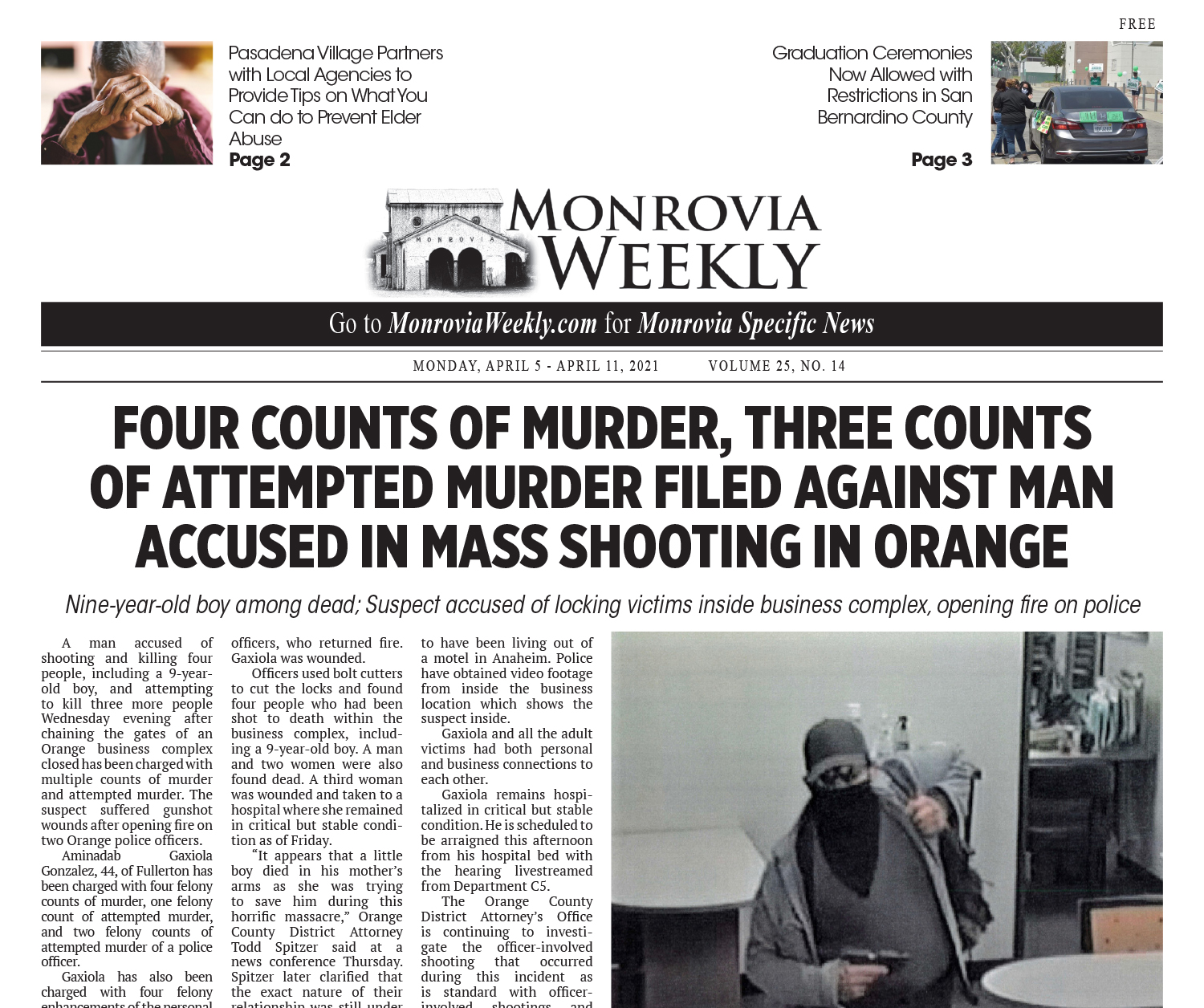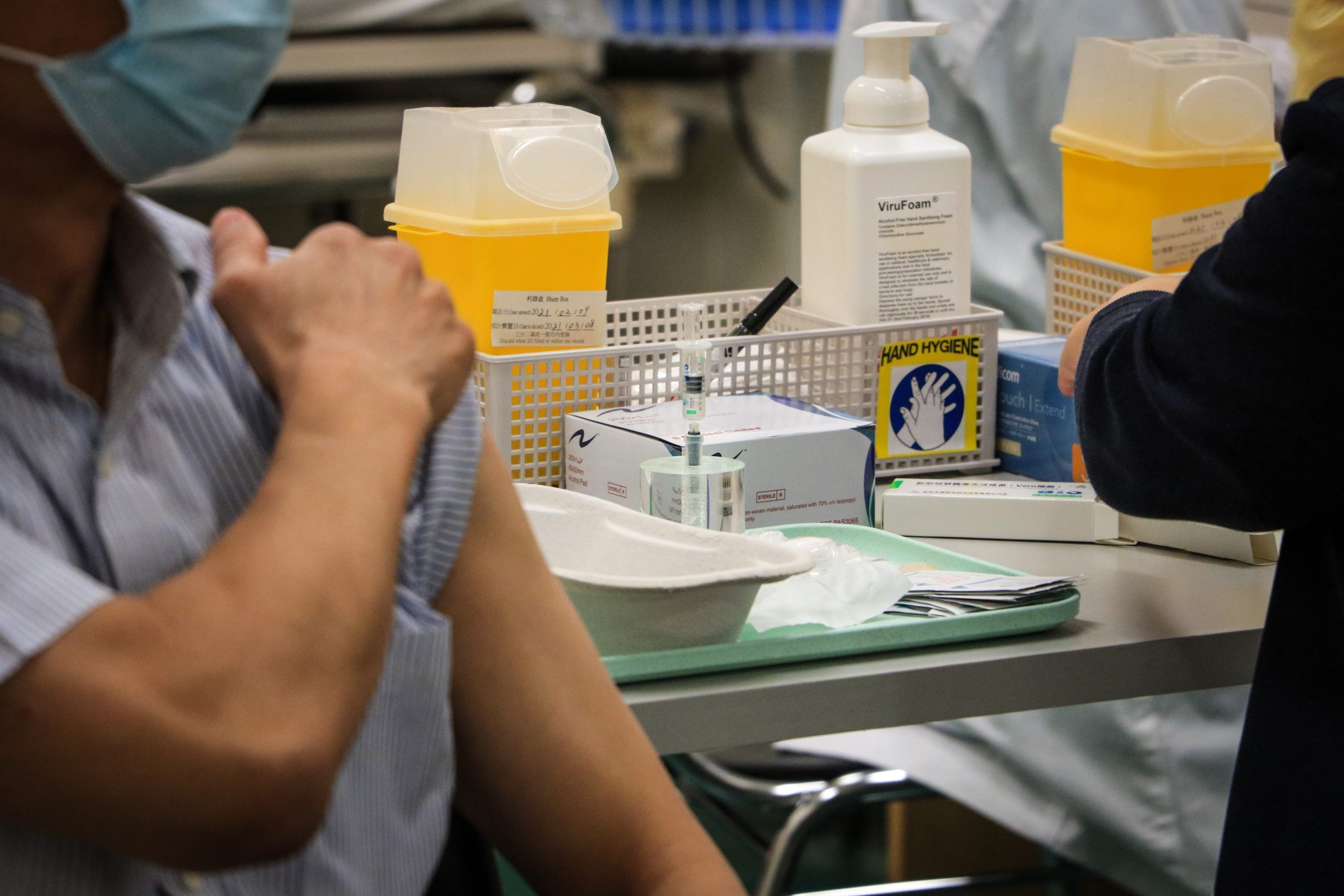When The Huntington Library, Art Museum, and Botanical Gardens announced last week the appointment of Dr. Nicole Cavender as the Telleen/Jorgensen director of the botanical gardens, she became its first female director — a momentous event in the beloved institution’s remarkable history.
And it is only fitting that Dr. Cavender has been chosen to hold that distinction. She has a B.S. in environmental and plant biology from Ohio University and a Ph.D. from Ohio State University in horticulture and crop science. She will officially join the Huntington on May 17, 2021 after serving nine years as vice-president of science and conservation at Morton Arboretum, a 1,700-acre area of plants and trees which also boasts a hiking trail. Previous to that, she was chief programmatic officer at The Wilds, a 10,000-acre safari park and wildlife conservation center in southeastern Ohio which offers adventures like zip lining, horseback riding, and fishing.

Her new post at The Huntington, which has a mere 207 acres of gardens, might seem a departure from what Dr. Cavender has done before. But at the core, she will be continuing to apply what she knows and carry out what she wishes to accomplish. As The Huntington’s announcement outlines, she “will oversee a staff of 85 and several hundred volunteers in caring for more than a dozen gardens, including the renowned Chinese Garden, Japanese Garden, Desert Garden, and Rose Garden (read about it here). In addition, she will be actively involved in developing and expanding botanical education, outreach, and research programs. Along with the gardens, the botanical division at The Huntington also includes a seed bank, tissue culture lab, and a cryopreservation lab focused on developing protocols for freezing plant tissue at extremely low temperatures and then bringing them back to life at a later date — an arm of research crucial to conservation and sustainability of rare species.”
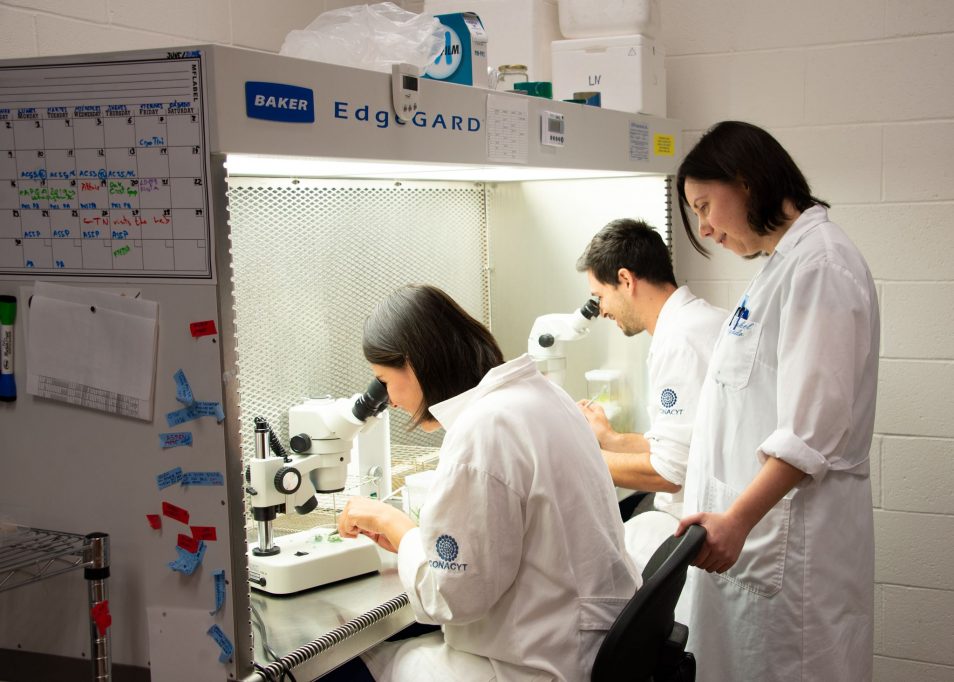
Dr. Cavender states via email interview, “I’ve been fortunate to have the professional experience of working to advance science, conservation, and human connections at wonderful and unique places such as the Wilds and the Morton Arboretum. Looking forward, The Huntington has one of the largest, most diverse collections of plants in the world with over 15,000 different types of plant taxa — absolutely incredible! It offers the opportunity to work among amazing colleagues and with an incredibly vast and diverse collection, where I can bring to bear my love of plants, my devotion to the study of biodiversity, and my desire to continue improving the human connection to and appreciation of nature.”
“My focus will be on working with the amazing Huntington botanical gardens’ staff while collaborating with the library and museum team members,” adds Dr. Cavender. “The Huntington provides an exceptionally unique opportunity for synergy to maximize our collective impact and provide a remarkable visitor experience. I want to be able to help promote the important role gardens play in conserving the world’s plant diversity, promoting good stewardship of our planet, while also providing creative spaces for cultural expression and the human spirit connection.”
Dr. Cavender’s personal upbringing, academic background, and work experience inform her career path. “My interest in plants is rooted in my childhood as my father was a mycologist (fungi) and botany professor at Ohio University for over 30 years. He inspired my passion for conservation and plant biology at an early age which led to my earning a Ph.D. from The Ohio State University in horticulture and crop science. A common thread throughout my entire life is a love of plants and animals from my formal education throughout my professional career. I’m very motivated to build, encourage and bring together teams of people around common goals that promote the protection and restoration of nature while enlightening the human spirit.”
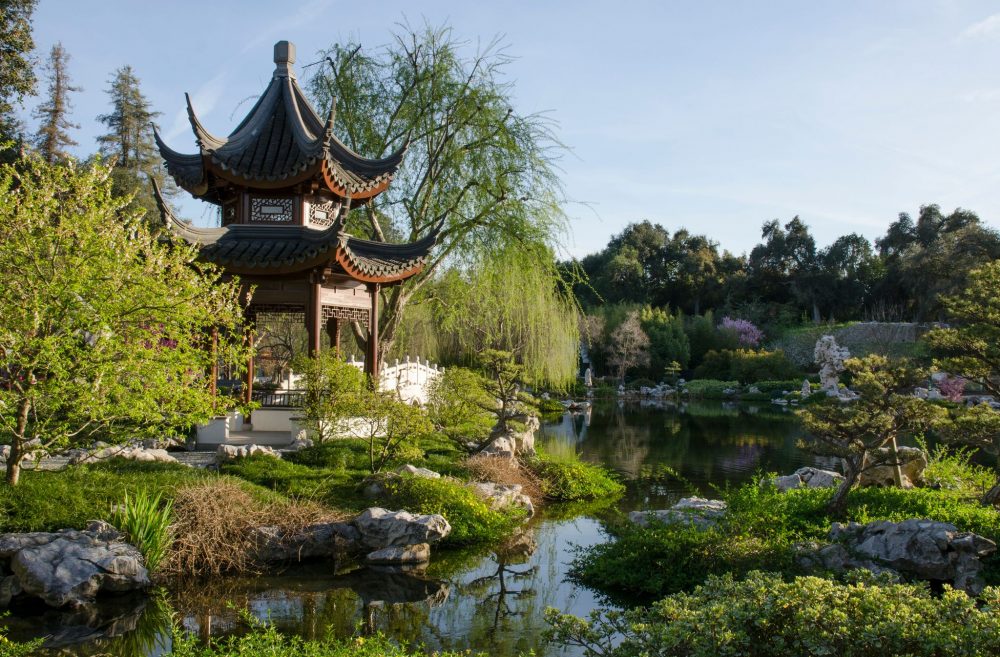
That The Huntington has one of the largest authentic Chinese Gardens in the country, the realization of a long-held dream of James Folsom (read related article here), is fortuitous. Dr. Cavender explains, “Jim left a remarkable legacy. His attention to detail and authenticity when creating the Chinese Garden and the botanical gardens as a whole is amazing. In my role as VP of science & conservation at The Morton Arboretum, I was fortunate to take numerous trips to China for projects that focused on tree conservation and urban forest management. I plan to build upon Jim’s successes and am excited to continue to advance the plant, human and cultural connection within this garden and the many other excellent gardens at The Huntington.”
Dr. Cavender will be working within a predominantly Asian American community at a time when there’s national focus on correcting people’s misconceptions about Asian culture and eliminating anti-Asian sentiments. Her appointment as the first female botanical garden director comes at an opportune period as The Huntington tries to rectify its past practices of inequity and as it embraces inclusion, as Carolina A. Miranda wrote on April 1, in an L.A. Times exclusive.
“My beliefs very much align with The Huntington’s principles on diversity, equity, and inclusion,” comments Dr. Cavender. “As a plant lover, I’m obviously thrilled by the diversity of species in the garden. But I’m even more excited by the diversity of the extended Huntington community and its historical role in the region. It’s been an honor to visit China numerous times over the years as I’ve developed a special appreciation of the culture which I treasure. I very much look forward to working with the local and national Asian community to build a better, more accurate understanding of Asian and Asian American history and culture.”
One of the many projects that Dr. Cavender will oversee is the addition in the Japanese Garden of a 350-year-old magistrate’s house from Marugame, Japan donated to The Huntington. When the fully dismantled house — currently being reconstructed with the help of a team of Japanese artisans — is completed, visitors can come in and learn about traditional Japanese residence and garden.
The distinction of being first in a given post isn’t new for Dr. Cavender. She discloses, “Each of my last two posts at the Wilds and The Morton Arboretum were newly developed roles so I was the first person to hold those positions. I’m honored to be the first woman director of the Huntington botanical gardens. More women are taking leadership roles in botanical gardens in the U.S. and even throughout the world than ever before, and I’m excited to be one of them.”
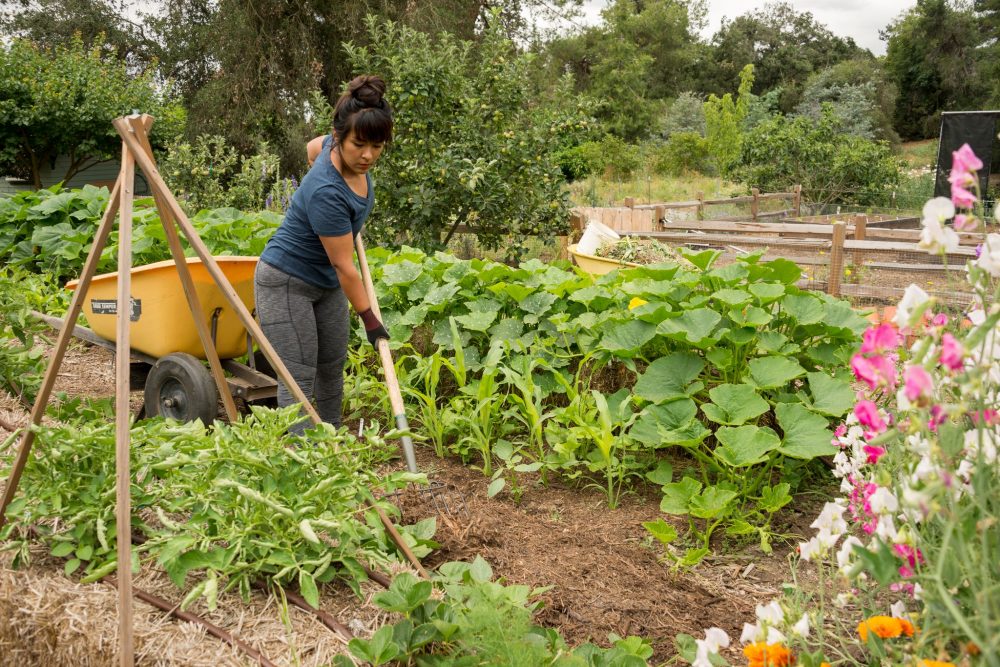
Asked if there was something she discovered about The Huntington that was surprising, Dr. Cavender replies, “I was delighted to learn about the potager (kitchen garden) and experimental ranch garden created and now dedicated to Jim Folsom. These are opportunities to teach students and people about the very important connection between plants, horticulture, and food sustainability.
“It’s been an absolute joy learning about the Huntington. It’s such a unique, complex place with a rich, diverse history. The plant collection is AMAZING and truly exceptional, and is one of the most diverse in the world, while the library and museum collections are outstanding. The combination of everything in one place is incredible. I look forward to being continually surprised as I learn more over time.
“I’m eager to be working with the team in all three areas — the botanical gardens, library, and art museum. I want to understand our unique strengths and opportunities so we can build upon them synergistically and move the institution forward in the most relevant way possible.”
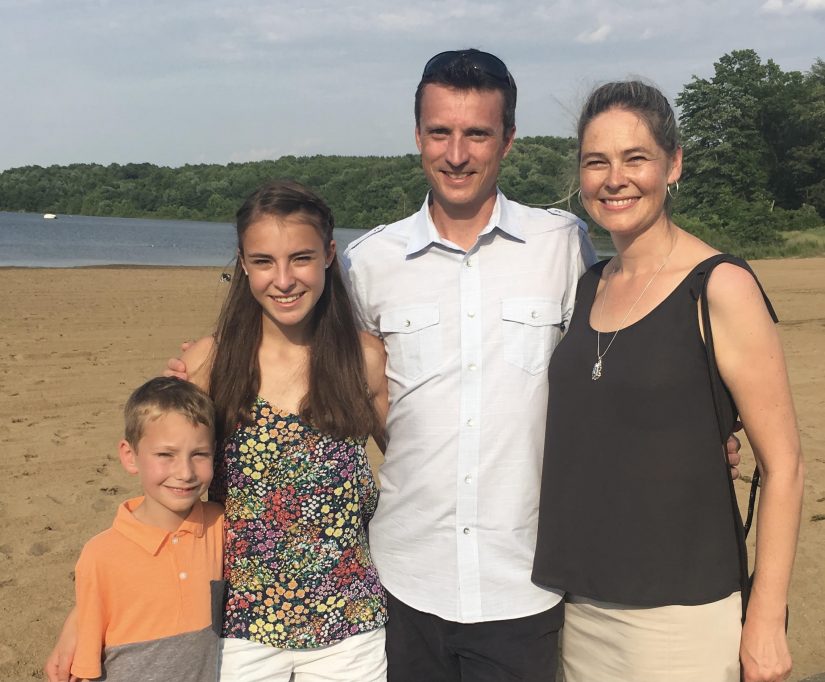
This relocation to the West Coast will be a novel experience for the Cavenders as they move halfway across the country and settle in their new home. Dr. Cavender reveals about her family “I’ve been married to my husband Gary for 24 years. We have two children — Laurel (a sophomore at Marquette University) and Andrew (a seventh grader). While both are sad to leave their hometown friends, they’re excited about potential adventures in Southern California. We all appreciate that this position with The Huntington is truly a once-in-a-lifetime opportunity.”
In spite of the notorious L.A. traffic, Southern California has much to offer, and Dr. Cavender acquiesces, “The weather is certainly a draw as cold Chicago winters can be challenging. As an avid gardener, I can’t wait to have year-round growing opportunities. I will absolutely have my own garden and look forward to growing vegetables, California wildflowers, citrus plants, succulents, cacti, orchids, etc. that simply can’t survive harsh winters in the Midwest. It’ll be a very fun learning experience for a plant geek such as myself. I know I will need to learn more about water conservation, especially knowing that we have a vast collection of plants to care for and plants need water!”
It will come as no surprise for us to discover that the Cavenders like to spend their leisure time in the great outdoors. And since the San Gabriel Valley is about a two-hour drive from either the mountains or the beaches, they’ll find many places to go to.
States Dr. Cavender, “We’re a very outdoor-oriented family. The recreation opportunities available in Southern California are incredible. We’ll definitely be hiking in the mountains during the hot weather months and along the beaches during the ‘cold’ months. But there are no ‘cold’ months in L.A. to someone from Chicago!”
We can imagine the Cavenders sitting at the viewing stands along Colorado Boulevard on a brisk New Year’s Day morning watching Pasadena’s famous annual Rose Parade (read related article about The Huntington’s centennial celebration float entry) without winter jackets.


